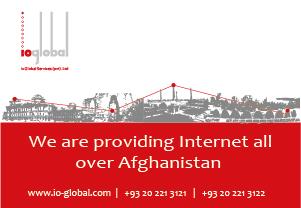KABUL Bank Governor Kahlil Sediq has expressed optimism over the country’s future economic situation despite the social and economic challenges, according to a media report on Tuesday.
Bringing Afghanistan up to international banking standards could mean rich rewards in the shape of a return to international financial markets, Sediq told the Banker.
To this end, the central bank, Da Afghanistan Bank (DAB), faces the twin tasks of modernising the country’s banking infrastructure and attempting to bring almost 90% of the population into formal banking for the first time.
Central bank governor Khalil Sediq will be presiding over the process. He says: “DAB’s key goal and ambition for the banks and economy of the country over the coming years is to maintain price stability through design, to implement of sound and prudent monetary policies, to mitigate severe fluctuations in exchange rate, and contribute to economic growth and overall macroeconomic stability.”
Progress so far has been positive. In December 2018, the International Monetary Fund (IMF) released its fourth six-monthly review of Afghanistan’s economic and financial reforms. This noted that the country had met the criteria with regards to its reform programme, and praised it for keeping inflation low and increasing currency reserves. Success in completing this fourth review qualified Afghanistan for $6.2m of IMF financing, bringing the total received to date to $24.8m.
Achieving greater stability in the banking sector may require closer inspection and tougher rules, however, and Mr Sediq says banks will be subject to regular supervision to ensure strong customer protection and that banks make inroads into improving financial inclusion.
Banking the unbanked
With financial inclusion part of its central agenda, DAB has also established a dedicated department to work on a national level. It is also collaborating with the World Bank on the National Financial Inclusion Strategy for Afghanistan (NFIS-A), to be launched by mid-2019. Mr Sediq says: “The NFIS-A will focus on the role of mobile technology for enhancing financial inclusion in the country, and the mobile network operators are our stakeholders in this process.”
A study by the World Bank revealed that 36% of Afghans do not use banks because their services are not sharia compliant, according to Mr Sediq. To address this, in 2018 the central bank approved the creation of the country’s first wholly Islamic bank, with the launch of Islamic Bank of Afghanistan (IBA).
The central bank governor is optimistic that increased access to sharia banking will make for more positive public perceptions of financial services in Afghanistan. “A fully fledged Islamic bank increases trust in the financial institutions as a whole,” he says. And in addition to increasing financial inclusion, IBA has contributed to economic growth through the provision of Islamic finance to businesses.
Stimulating business
The central bank has taken other steps to push Afghanistan’s economy forward. At the start of 2019, DAB announced the average interest rate cut was to be rolled out across the country. Initially launched in March 2018, the cut will reduce the average interest rate on loans from 13% to 12.2%, with the hope it will increase investment and improve economic growth. In addition, loan guarantees have been simplified and the repayment periods extended from three years to either five or seven years.
Agriculture accounts for a dominant portion of Afghanistan’s gross domestic product, with about 61% of households deriving income from the sector. According to the World Bank, 70% of Afghans live and work in rural communities. Mr Sediq says the country has been hit by drought, but recent rain and snowfall should improve farming conditions and boost the agricultural sector.
On a macro level, the central bank acknowledges the need to keep the afghani stable, to encourage international trade and attract more foreign investment into Afghanistan. “The central bank maintains a managed floating exchange rate regime, and it intervenes in the foreign exchange market to mitigate severe fluctuations in the exchange rate, in particular in the exchange rate of afghani against US dollar. DAB primarily uses two instruments – foreign exchange and capital note auctions – for the stability of afghani currency in the market,” says Mr Sediq.
Supporting banking
Since Afghanistan’s potential success rests on maintaining a stable banking sector, there are concerns that forthcoming elections and rising political tensions will negatively impact both the economy and banks’ willingness to take on risk. Mr Sediq says: “In the banking sector; unfortunately political tensions would discourage banks to invest in their infrastructure and expand more credit to the private sector in the short to mid term.”
The ongoing US-Taliban peace talks could bring about the stability Afghanistan desperately needs, however, and the central bank governor believes any progress in the peace talks will positively impact the banking sector and benefit the private sector in the country.
“These developments may have a profoundly positive impact on macroeconomic stability,” says Mr Sediq. “Overall, the prospect of economic growth for the coming years in the country seems fairly bright in the midterm.”
nh
Views: 13









GET IN TOUCH
NEWSLETTER
SUGGEST A STORY
PAJHWOK MOBILE APP